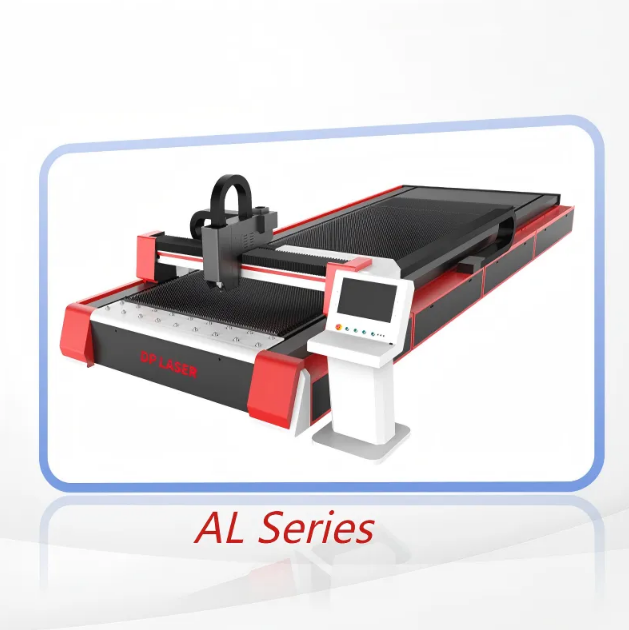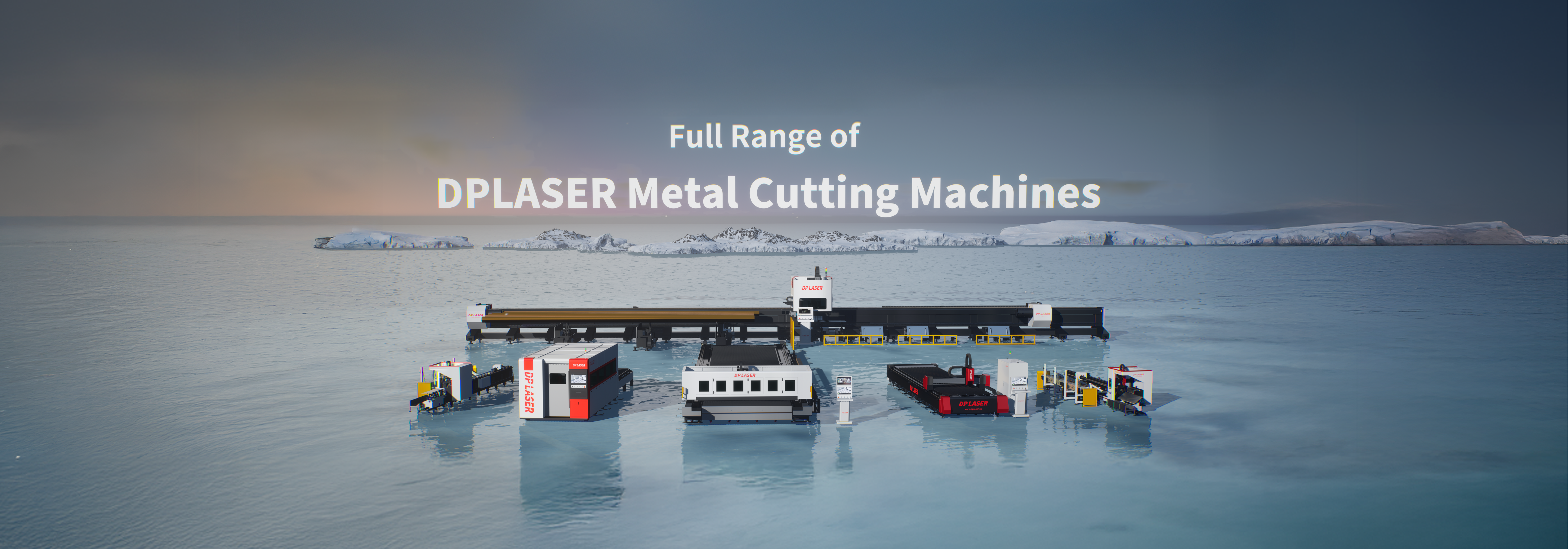What materials can a modern laser cutting machine process?
Most commonly laser cutting machine handles
Typically, when describing laser cutting machines, the first thing users highlight is the ability to handle a variety of metals. This is due to the demand of professionally designed machines for the processing of different metal materials. This is why these machines are a fundamental part of industries like sheet metal fabrication and equipment manufacturing for the carbonated kitchen appliances.
Among the most fabricated materials are different gauges of carbon steel. Made structures as well as thin plates for electrical enclosures can be processed by laser machines of any grade. This is due to the ability of the machine to vary the laser power to suit the specific material. Lower laser power is ideal for cutting thin carbon steel sheets whereas thicker plates require power above (6000W which some machines provide, with a laser cutting machine). This greatly minimizes considerable post- processing.
Another very popular material is stainless steel, especially for industries that involve the manufacturing of food equipment or medical devices for which corrosion resistance is important. Today’s advanced laser cutting machines are able to cut stainless steel without the material warping; something that occurs often with older cutting machines. Heat is laser focused, so unlike older cutting methods, the heat is not excessive. Be it SUS304 or any grade of stainless steel, the machine is able to make precise cuts, narrow slits and ensures that the parts are perfectly fitted for seamless assembly.
Coated galvanized steel and electrolytic plates are also used. These plated metals may be hard to laser cut due to chemical reactions that can occur with the heat. Modern laser cutting machines get around this with their optimized gas control systems. Using the right assist gas, be it nitrogen or air, the machine ensures the coating burns or peels and maintains the cut edges smooth. This is especially important for industries that manufacture electrical cabinets or lighting fixtures, where plated metals and their durability, as well as their appearance, are essential.

Non-ferrous metals handled by modern laser cutting machines
Modern laser cutting technologies are able to cut through non ferrous metals which were difficult to cut through lasers in the past. Aluminum alloys are a good example. Aluminum is a lightweight metal with a high thermal conductivity. This makes laser cutting complex. However, high power lasers and advanced cooling systems makes the cutting process far more efficient.
This is particularly the case with thin aluminum sheets. (1 to 3 millimeters). The laser is able to cut through the aluminum with a laser power reducing to avoid overheating. With thicker aluminum plates laser cutting of 3000 watts and more makes achieving straight and clean cuts along the edges with nitrogen as a primary cutting assist gas. This versatility is a major reason why so many aluminum manufacturers have switched to laser cutting. This saves them from the hassle of quickly wearing out specialized cutting tools.
Laser cutting technology is also able to work with brass and copper and other nonferrous metals. Brass and copper can be highly reflective and for a time caused poorly designed lasers to rot and not burn. New technology has provided much more powerful and focused lasers to be used for cutting. Brass used for more decorative and electrical components cuts with far lower heat and preserves a shiny finish. Copper is used for electrical wiring and connectors. More sophisticated cutting machines precisely cut more complex patterns for parts to be used with copper wiring.
When it comes to the technological capability of cutting machines, there are still some materials that can’t be cut with the laser. The performance of the laser greatly depends on the power. Various thicknesses of the material to be cut with the laser will also depend on the power used. Cutting a 1 mm sheet of Steel will only require 1500 watts, while 6000 watts will be needed to cut through 20 mm thick carbon steel. Most modern machines (like some models from DP LASER) offer adjustable power options, ranging from 1500W to 6000W, so users can match the power to the material.
Assisting gas is very important, too. Depending on the assist gas, quality of the cut varies along with the cut edge’s integrity. For instance, stainless steel and aluminum are cut with nitrogen gas, preventing oxidation of the cut edge and rusting or discoloration over time. For carbon steel, oxygen works best and is used because it accelerates the cutting process, providing faster cuts on thicker plates. Modern laser cutting machines have advanced gas control systems that allow easy switching between high and low-pressure gas systems. This is very important, as every material requires different pressure gas for best results.
Each machine’s control system is important, too. A high-end CNC system cuts through the laser of the machine, ensuring that the laser moves with precision over the material. This is very important for cutting complex and intricate parts that require tight tolerances for layers, as in electric parts. The control system also assists in troubleshooting, which decreases downtime in switching between different materials.
Ignoring material thickness limitations isn't practical. Every laser cutting machine can only handle a specific material thickness. For instance, one machine can cut carbon steel that is 25mm thick, but only 10mm thick aluminum. Users should refer to the machine's specifications (for example, the technical parameters provided for DP LASER's AL Series) to understand if the machine can adequately handle the thickness material they use.
Practical applications on different industries using modern laser cutting machines
The different materials that modern laser cutting machines can handle cutting, makes them a versatile tool in a wide range of industries. Sheet metal fabrication is one of the industries that laser cutting machines. In this industry, fabricators use laser cutting machines to cut carbon steel, stainless steel, and aluminum. The pieces are then prepared for assembly of a wide range of industrial tools and machinery down to simple consumer goods. The precision of the laser cutting machines eliminates the need for assembly line adjustment, thereby drastically reducing assembly errors.
Another large user is the manufacturing of kitchen appliances. Take the stainless steel refrigerator panels or the aluminum internal components of ovens. The modern laser cutter is capable of cutting both of these materials. The cookers and ovens perform well, and are aesthetically pleasing, because the laser cutter machines eliminate warping of the materials during cutting and create smooth edges. Additionally, since manufacturers work with both stainless steel and aluminum, they don’t have to invest in separate machines for different components.
Another crucial use is in the cabinets and enclosures used for electrical equipment. These are made of galvanized steel or electrolytic plates that need to be precisely shaped to enclose electrical components. The gas control system of the laser cutter maintains the integrity of the coatings on the plates to avoid rust and extend the life of the enclosure or cabinet. The machine’s precise position control of commonly ±0.03mm in some models ensures that the openings for wires and switches are exactly where they are needed.
The signage and lighting industries also enjoy notable advancements. Be it a storefront's stainless steel signage or a LED light fixture's aluminum frame, laser cutting machines produce elaborate designs that would be challenging to make using conventional methods. They also make light fixtures by cutting thin, elaborate, decorative patterns from brass sheets and keeping the brass shiny and detailed.
Modern laser cutting machines are also used in the production of electrical equipment. They are used to cut copper parts for wiring, aluminum parts for transformers, and various other parts that are then assembled to form transformers. Given the requirements for precision in the electrical industry, the quick, accurate, and intricate cutting of non-ferrous metals, such as copper and aluminum, makes laser cutting machines invaluable as it reduces the time spent on multiple cutting processes.
The versatility of laser cutting machines, the ability to easily change from one material to the other, streamlines processes in any industry. Rather than having to use several machines for carbon steel, aluminum, and brass, a single laser cutting machine can cater to all their requirements. It is this remarkable flexibility that makes laser cutting machines a critical investment for numerous businesses.

